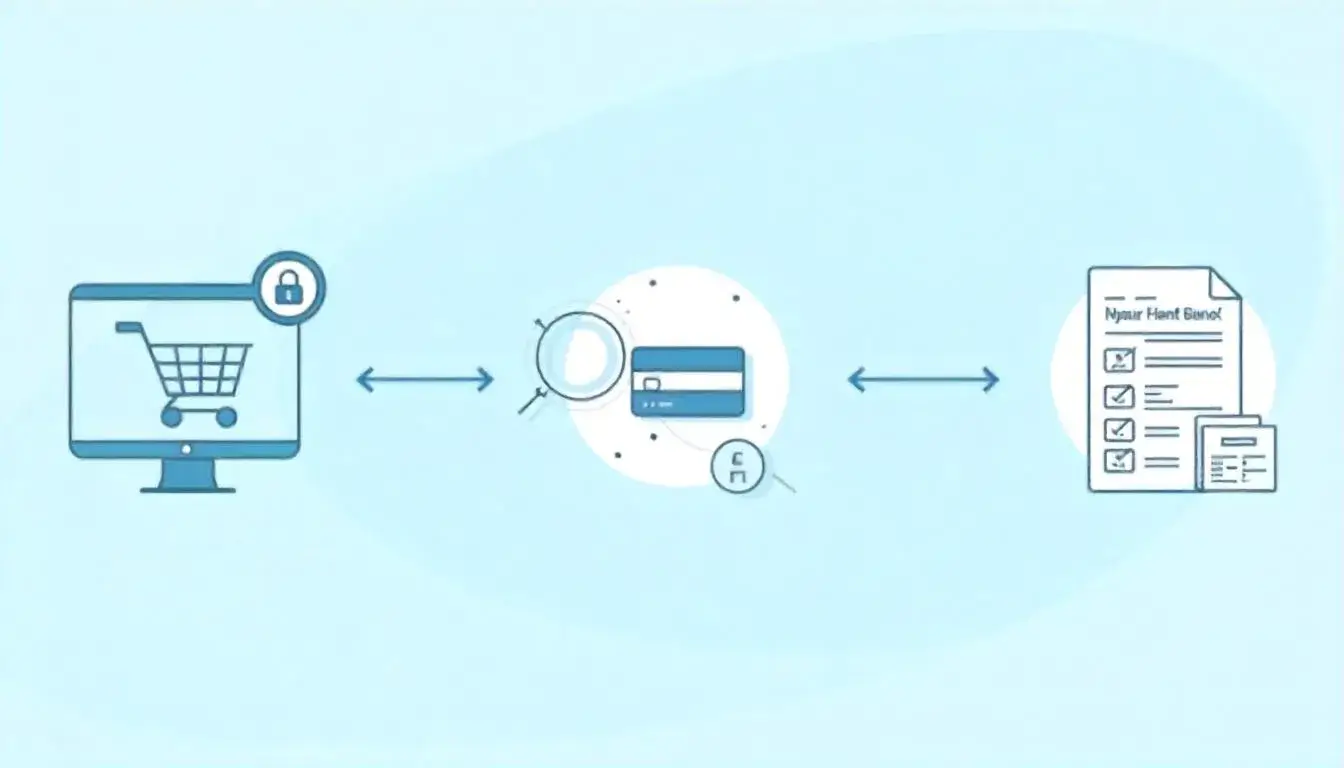In the rapidly evolving digital commerce landscape, a seamless checkout experience is more crucial than ever.
With competition tightening, having a reliable and efficient ecommerce payment gateway can directly impact your sales, conversion rate, and customer trust. This in-depth guide explores the top ecommerce payment gateways for 2025, analyzing their features, pricing, global reach, integration ease, and unique benefits to help you select the right solution for your online store.
Why Payment Gateways Matter in 2025
What is an Ecommerce Payment Gateway?
An ecommerce payment gateway is a technology service that securely processes credit card, debit card, and alternative payment transactions for online businesses. It acts as a bridge between the customer’s payment method and your bank account.
How the Right Payment Gateway Impacts Your Online Business
- Faster Transactions: Reduces cart abandonment due to slow checkouts.
- Security: Enhances trust with encryption and fraud protection.
- Global Expansion: Supports multiple currencies and payment methods.
- Brand Trust: A familiar and secure checkout process increases buyer confidence.

Key Features to Consider in a Payment Gateway
Transaction Fees and Pricing
Fixed vs. Percentage-Based Fees
Most gateways charge a percentage per transaction or a mix of fixed and variable fees. For example, PayPal may charge 2.9% + $0.30 per transaction.
Monthly Fees
Some providers offer premium services with a monthly subscription in exchange for lower per-transaction costs.
Security and PCI Compliance
- SSL Encryption
- Tokenization
- Fraud Detection Systems
- PCI DSS Certification

Payment Methods and Currency Support
- Credit/Debit Cards (Visa, MasterCard, AMEX)
- Digital Wallets (Apple Pay, Google Pay, PayPal)
- Cryptocurrency
- Buy Now, Pay Later (BNPL) options
- Multi-currency compatibility
Integration and Developer Support
- APIs and SDKs
- CMS Plugins (Shopify, WooCommerce, Magento)
- Mobile Optimization
Payout Time and Settlement Options
- Instant, Daily, or Weekly Payouts
- Local Bank Transfers
- Currency Conversion Fees
Top Ecommerce Payment Gateways for 2025
1. Stripe
Why Stripe Leads in 2025
Stripe continues to dominate with its developer-friendly APIs, strong global presence, and flexible payment solutions for all business sizes.
Key Features
- Supports 135+ currencies
- Embedded checkout and mobile-ready
- Built-in fraud detection (Radar)
- Extensive integration options
Pros
- Transparent pricing
- Customizable checkout
- Advanced reporting tools
Cons
- Developer knowledge required for advanced features
- Not ideal for offline payments
2. PayPal
Still a Favorite for Buyers and Sellers
With a trusted name and broad global acceptance, PayPal remains a top choice in 2025.
Key Features
- One-touch checkout for fast payments
- Buyer and seller protection
- Integration with major ecommerce platforms
- Pay Later feature included
Pros
- Brand recognition
- No monthly fees for standard account
- Instant access to funds via PayPal balance
Cons
- Higher transaction fees
- Redirects users offsite for payment
3. Square
Best for Omnichannel Retailers
Square’s combination of point-of-sale and online payment solutions makes it ideal for businesses with both physical and digital stores.
Key Features
- Free POS system integration
- Inventory and sales tracking
- Mobile payments
- Subscription billing support
Pros
- Great for U.S.-based businesses
- Clean, simple interface
- Easy onboarding
Cons
- Limited international reach
- Not as customizable as Stripe
4. Adyen
Enterprise-Grade Solution
Used by major brands like Uber and Spotify, Adyen is built for scaling businesses seeking global reach.
Key Features
- End-to-end payment infrastructure
- Multi-currency support
- Custom risk management tools
- Unified commerce solution
Pros
- Enterprise-level analytics
- Local payment methods
- Scalable for fast-growing businesses
Cons
- High setup threshold
- Not suitable for small merchants
5. Braintree
Developer-Friendly with Full PayPal Ecosystem
As a PayPal service, Braintree offers advanced tools with a focus on customization and international payments.
Key Features
- Hosted fields and custom UIs
- Supports Apple Pay, Google Pay, Venmo
- Vaulted card storage for subscriptions
- Global fraud protection tools
Pros
- Highly customizable
- Wide currency support
- Seamless PayPal integration
Cons
- Complex for beginners
- Requires coding knowledge
6. Authorize.Net
A Veteran Still Going Strong
Backed by Visa, Authorize.Net remains a dependable choice for U.S. merchants needing reliable processing.
Key Features
- Virtual terminal
- Recurring billing
- Advanced fraud detection suite
- QuickBooks integration
Pros
- Excellent customer support
- High security
- Good for recurring payments
Cons
- Dated interface
- Monthly fee required
7. 2Checkout (now Verifone)
Global Focus with Flexible Plans
Ideal for SaaS and digital goods providers, Verifone (formerly 2Checkout) allows you to sell worldwide with minimal friction.
Key Features
- Global tax and compliance support
- Supports 100+ currencies
- Multiple checkout options
- Subscription billing
Pros
- Easy global expansion
- Good digital product support
- No monthly fee
Cons
- Slightly higher transaction fees
- Less suitable for physical goods
Niche and Regional Payment Gateways to Watch in 2025
Razorpay (India)
- Supports local UPI payments
- Easy integration for Indian startups
Paystack (Africa)
- Nigerian-based, acquired by Stripe
- Strong mobile money support
Klarna (Europe and US)
- Leader in Buy Now, Pay Later (BNPL)
- High conversion rates for fashion and electronics stores
Mollie (EU)
- Easy EU payments
- Localized checkout experiences
Ecommerce Trends Influencing Payment Gateway Features in 2025
AI-Powered Fraud Prevention
Instant Payouts with Blockchain
Increased BNPL Adoption
Greater Cryptocurrency Acceptance
How to Choose the Right Ecommerce Payment Gateway
Step-by-Step Evaluation Guide
Step 1: Define Your Target Market
- Domestic vs. international customers
Step 2: Estimate Transaction Volume
- Choose fee models based on size
Step 3: List Your Required Payment Methods
- Credit cards, wallets, BNPL, etc.
Step 4: Prioritize Integration Simplicity
- Check compatibility with your ecommerce platform
Step 5: Compare Fees and Payout Policies
- Include conversion and settlement fees
Step 6: Test the Checkout Experience
- Simulate the buyer flow
Common Pitfalls to Avoid
Ignoring Hidden Fees
Choosing an Inflexible Gateway
Neglecting Security Compliance
Overlooking Mobile Optimization
Final Thoughts
In 2025, choosing the right ecommerce payment gateway isn’t just a technical decision—it’s a strategic one. Whether you’re a startup or an enterprise, aligning your payment solution with your audience’s preferences, your business model, and your long-term goals will enhance your conversion rates and customer trust. From Stripe’s developer power to PayPal’s widespread adoption, the landscape offers a variety of options fit for every ecommerce journey.
Frequently Asked Questions
What is the cheapest ecommerce payment gateway?
It depends on your transaction volume. Stripe and Square often offer competitive rates with no monthly fees.
Can I use more than one payment gateway?
Yes, using multiple gateways can increase conversion by offering more options.
Which gateway is best for international sales?
Adyen and Stripe have robust international support.
Are there payment gateways with cryptocurrency support?
Yes, some gateways like Coinbase Commerce and BitPay offer crypto options.
What is the most secure payment gateway?
Most major gateways are PCI-compliant. Authorize.Net and Stripe offer advanced fraud detection tools.


